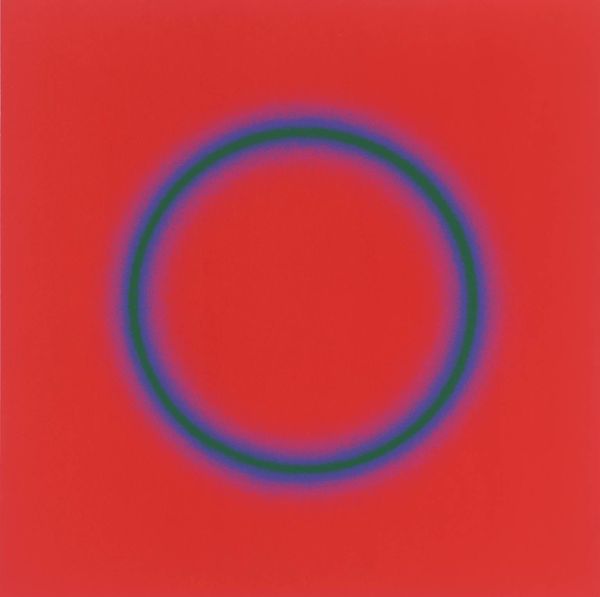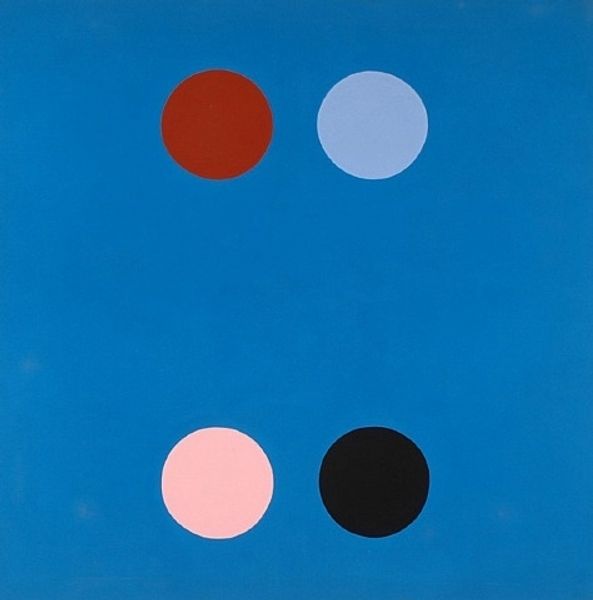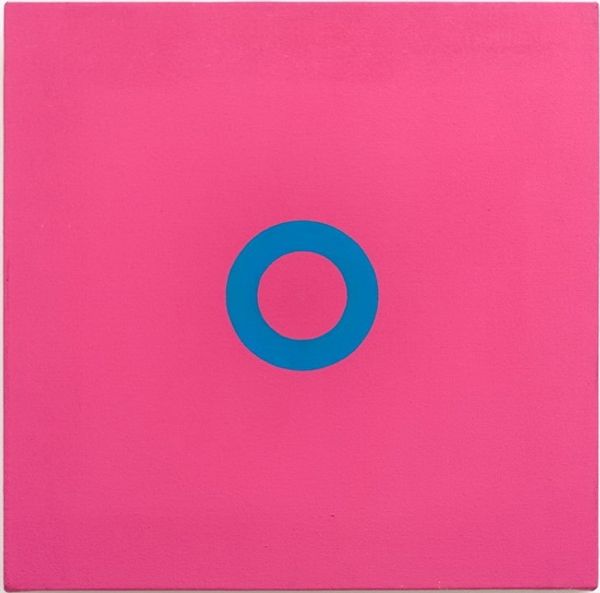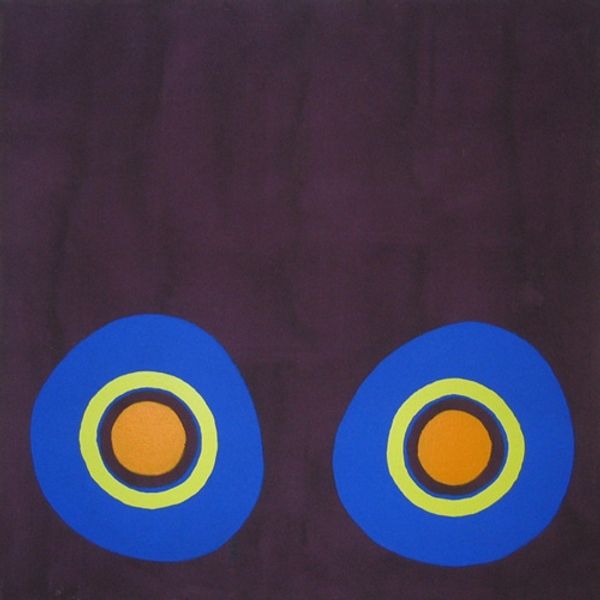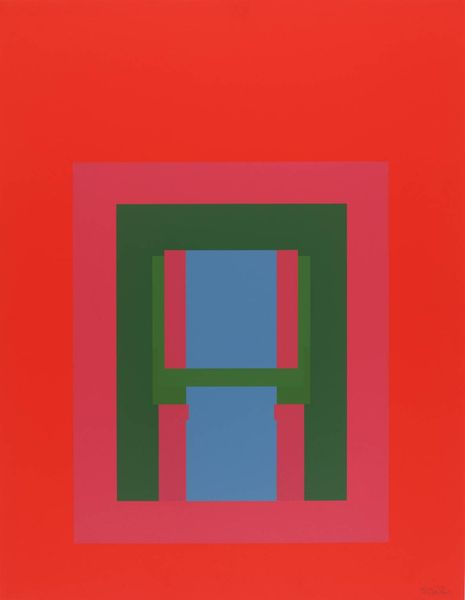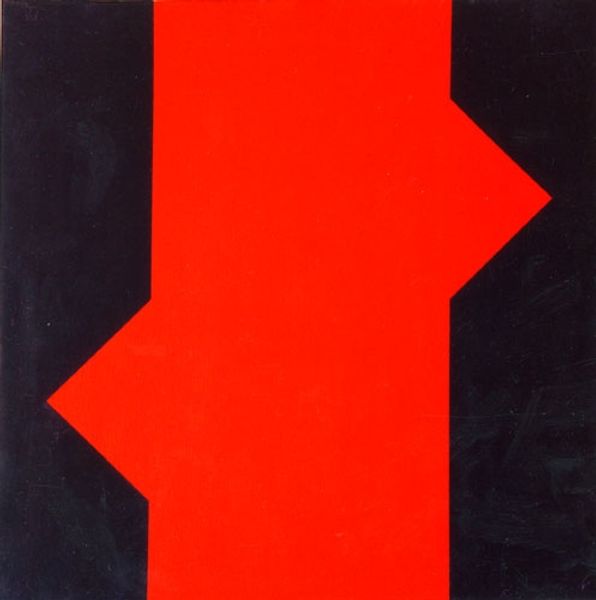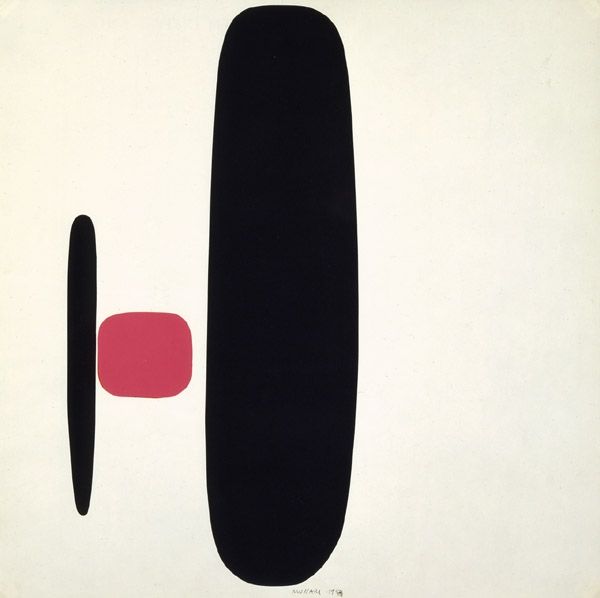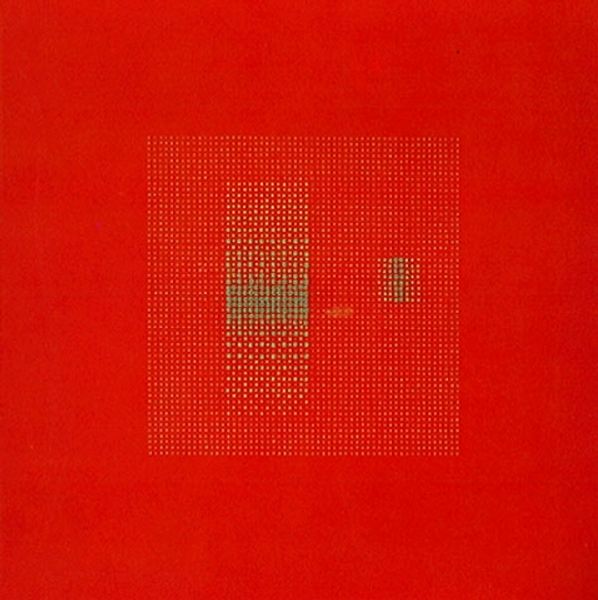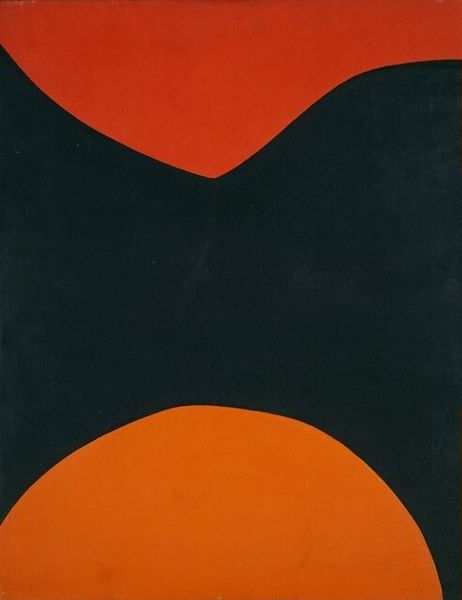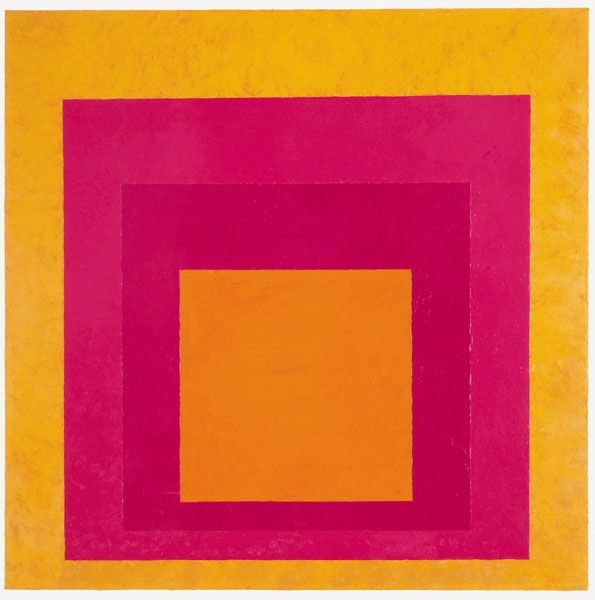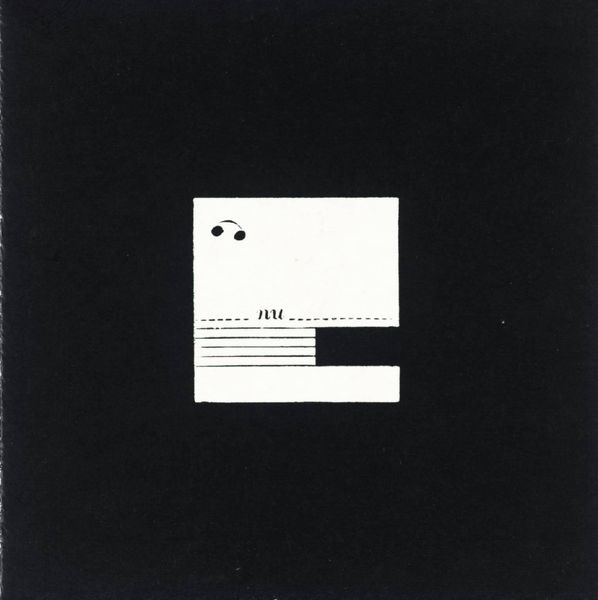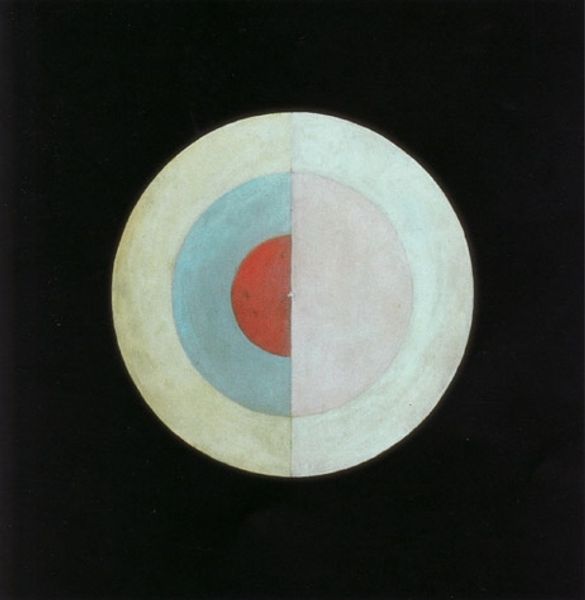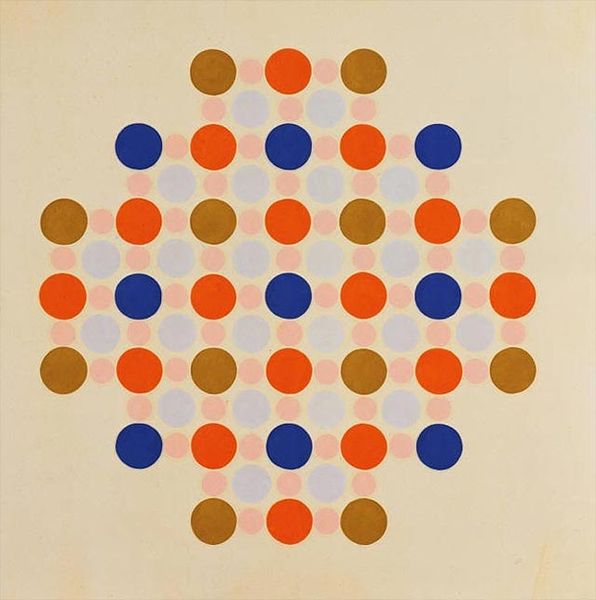
Copyright: Gary Hume,Fair Use
Curator: We're standing before Gary Hume's "Snowman," created in 1996. It’s a vibrant, minimalist piece rendered in acrylic and ink. Editor: My initial impression is how playful and somewhat unsettling it is. The intense pink background, contrasted with the almost blood-orange circles, evokes a peculiar, almost jarring feeling. Not quite what one expects from the familiar subject matter of a snowman. Curator: Precisely. Hume employs simplification to a striking degree. He reduces the snowman to its most fundamental geometric forms, which immediately draws focus on the color relationships. Notice the interaction between the two round shapes; how they almost seem to float against the background? The precise registration enhances its flatness, resisting any illusion of depth. Editor: And yet, the flat surface speaks volumes. There’s a cultural reading here as well. Consider the context: the '90s art scene's engagement with consumerism and commodification. A snowman, typically a symbol of innocent, childlike joy, becomes something…else. Is it a commentary on the superficiality of image culture? The commercialization of winter holidays perhaps? Curator: That's a very interesting point. Certainly, his broader work engages with similar themes of cultural detritus. Here, one could interpret it in the context of Pop Art's legacy—elevating a mundane subject through color and form. Editor: Right, and think about Hume’s artistic circle, many were queer identifying individuals using artistic intervention to express the impact of the AIDS epidemic. There’s something melancholic beneath its bright exterior. Curator: Interesting perspective. In any case, its real success lies in its masterful application of formal principles, line, color, and shape, triggering, as you said, strong emotions. Editor: It really makes you wonder about the layers of meaning embedded within such simple visual forms. "Snowman," isn't merely a figure but also a cultural marker that sparks diverse discussions. Curator: Ultimately, Hume leaves it up to the viewer to discern what lies beneath.
Comments
No comments
Be the first to comment and join the conversation on the ultimate creative platform.
